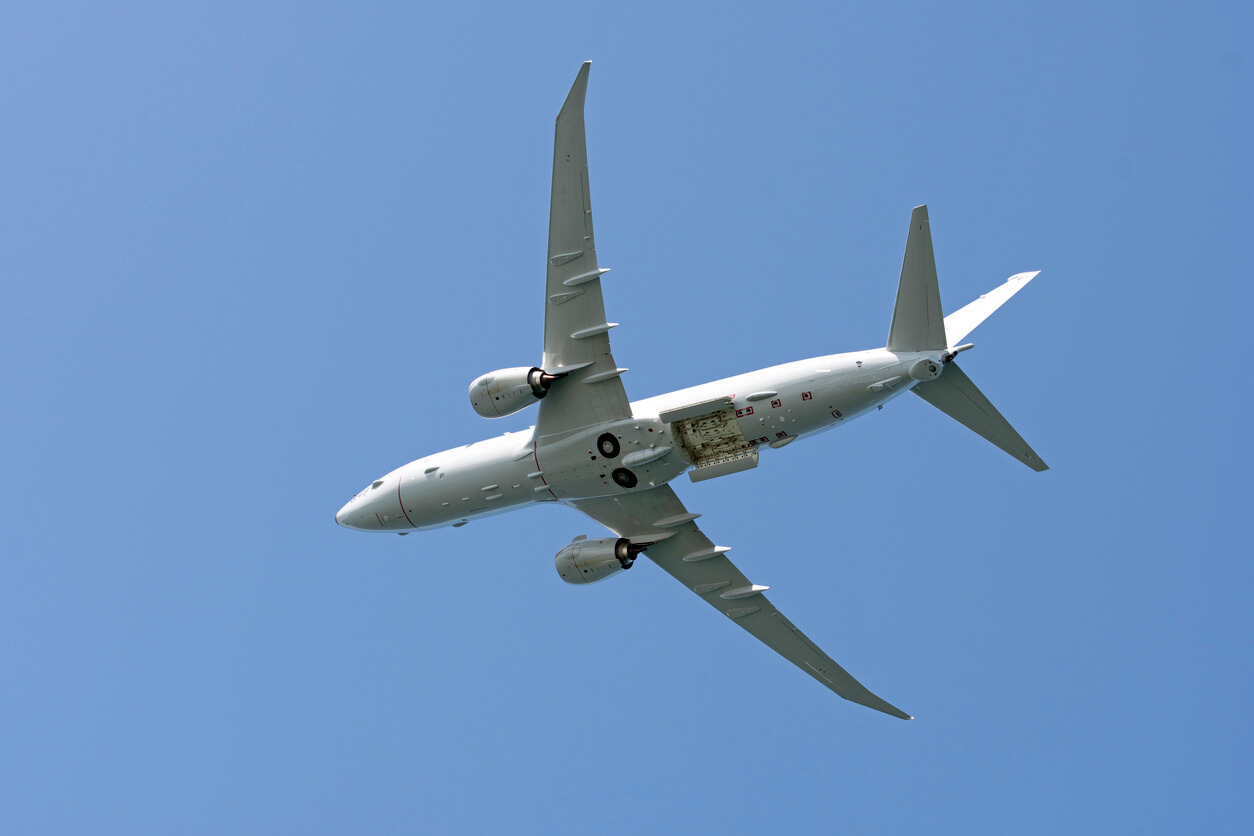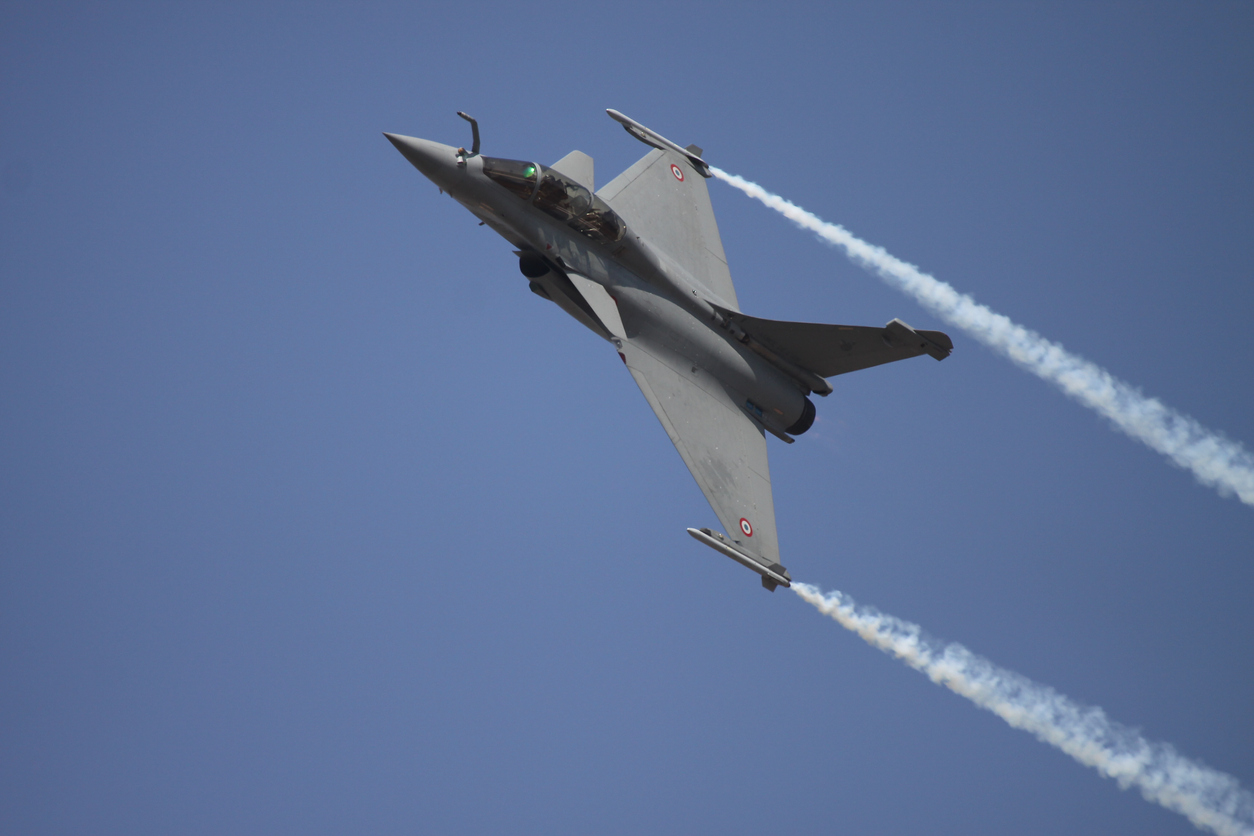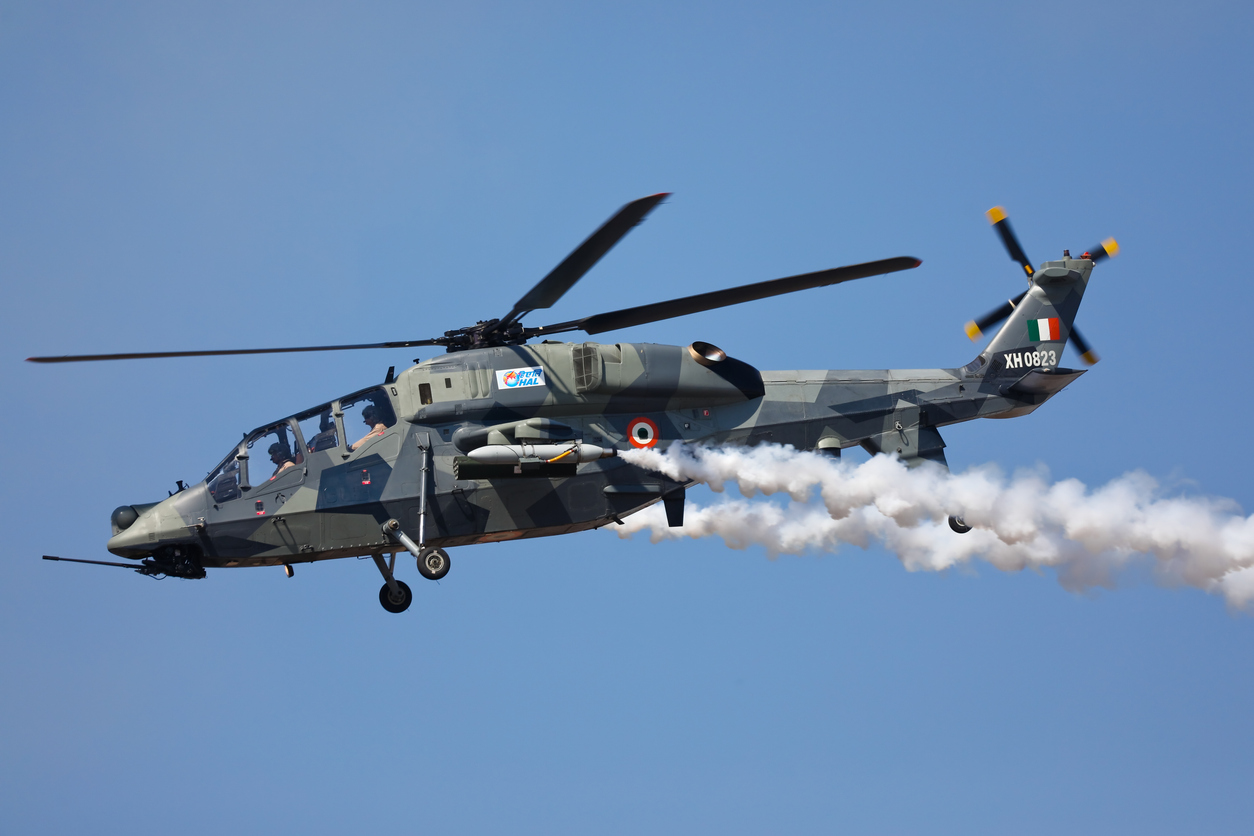
Maritime Reconnaissance Platforms: Key to Multi Domain Awareness

In the global scenario of ever-shrinking battlespaces, populated by regular and non-State belligerents, there is a need to equip our Armed Forces with the capability for persistent, accurate and robust Intelligence, Surveillance and Reconnaissance (ISR) in all three domains. However, by sheer virtue of vastness and consequent difficulty of physical dominance, maritime domain awareness assumes criticality and consequently, necessitates a very high degree of ISR effort. This requirement is met by Maritime Reconnaissance Platforms (MRP), which are an integral and indispensable part of Naval capability.
The Technology Perspective & Capability Roadmap (TPCR), a vision document for capability building for the Indian Armed Forces upto 2027, recognizes the imperative need for frontline airborne maritime recce (MR) capabilities and envisages that the need for persistent surveillance would be met through a surveillance matrix comprising of Long/Medium Range Maritime Reconnaissance (LRMR/MRMR) aircraft, amphibious aircraft and UAVs.
The ambit of maritime ISR would cover the entire maritime domain to include the high seas, littoral areas and the sub-surface domain. Apropos, achievement of holistic ISR capability over the maritime domain would necessarily include airborne, surface and sub-surface assets with apt ISR payloads.
Global Maritime Patrol Aircraft (MPA)
While MRP take many forms, the principal platform for maritime ISR is the MPA, which this article would aim to predominantly profile. A number of Nations and military aviation firms manufacture MPA. A few frontline variants in the global market are listed below:-
- P-8A Poseidon. The P-8 platform, based on the Boeing 737-800 airliner, is a replacement for the ubiquitous P-3C Orion. The P-8A is capable of performing maritime patrol, ISR and Anti-Submarine Warfare (ASW) missions. It is equipped with the Raytheon AN/APY-10 Mechanically Scanned Radar, optimized for maritime/littoral/overland surveillance. The MRP can fly at over 900 kmph, with a range in excess of 7200 km without refuelling. The Indian Navy (IN) operates a customised version designated as the P-8I Neptune.
- Kawasaki-P1. This aircraft is a specifically manufactured MPA by Kawasaki Heavy Industries to replace the ageing Japanese P-3C fleet and is the first aircraft in the world to use a fly-by-optics (OFC based fly-by-wire) control system . The MPA is equipped with the Toshiba Active Electronically Scanned Array (AESA) Radar which uses four antennae for 360º coverage, Magnetic Anomaly Detector (MAD) in the extended tail (MAD is able to detect the magnetic anomaly of a submarine in the Earth’s magnetic field, at close ranges) and IR/light detection systems to ensure efficient detection/tracking of submarines/small vessels. The Kawasaki P-1 has a ferry range of 8000 km and a combat radius of 2500 km.
- Saab Swordfish. The Swordfish MPA is based on the Canadian Bombardier Global 6000 Business Jet and is manufactured by Sweden’s Saab. For ISR, the aircraft is equipped with a 360º rotating multi-mode maritime surveillance (MS) radar, state-of-the-art nose mounted EO and LASER sensors for persistent surveillance, imagery and target detection, Automatic Identification System (AIS), Identification Friend or Foe (IFF) and Direction Finding capability. It can remain airborne for over 11 hours with a maximum range of over 8100 km and an effective patrolling time in excess of 7 hours.
- KQ-200 MPA. This MPA of the Chinese PLA Navy (PLAN) is based on the Y-8 turboprop platform. For ISR, the aircraft is equipped with a nose-mounted surface search radar, a fuselage-mounted EO payload and a MAD. The MPA has an endurance of 10 hours, cruising speed of 660 kmph and range of 5000 km. The aircraft could also serve as a C2 platform for PLAN Underwater Unmanned Vehicles (UUV).

KQ -200 MPA: Source-hisutton.com
India’s Tryst with MRP
The regional maritime commons that surround the Indian subcontinent, containing a 7500 km coastline, close to 1200 island territories and an Exclusive Economic Zone (EEZ) in excess of 2 Million km2, present peculiar security challenges on the high seas/ coastal regions, in the surface/ sub-surface domain. The threat perception gets accentuated by China’s ever-increasing Naval footprint in the Indian Ocean Region and Pakistan’s improving maritime surface/sub-surface capabilities. Add to this the additional threat dimension of piracy, smuggling and trafficking in the littoral waters and the requirement of modern MRP capable of persistent, all-weather ISR immediately emerges as an operational imperative to safeguard India’s maritime domain.
Maritime Patrol Aircraft (MPA)
- The origins of India’s MR capability in 1976 with five Lockheed Super Constellation Aircraft handed over by the Indian Air Force (IAF) were soon augmented by five Russian Ilyushin IL-38 SD MPA- a multirole platform in service with the IN since 1977(2)/1983 (3) and capable of maritime ISR, Electronic Intelligence (ELINT) and Search & Rescue (SAR) missions, apart from ASW/anti-surface warfare capability. These aircraft mount a MAD, a nose-mounted Forward Looking Infrared (FLIR) pod, a fuselage mounted ELINT system and have been equipped with the Sea-Dragon Digital Search-and-Tracking System as part of their mid-life upgrade. The aircraft has a maximum speed of 645 kmph, ferry range of 7500 km, endurance of 13 hours and service ceiling of 36,000 feet. Two of these MPA were unfortunately lost in a mid-air collision in October 2002.
- The IN also operated eight Tu-142MK-E LRMR/ASW aircraft of the erstwhile Soviet Union for close to three decades, beginning 1988, which were fitted with the Israeli EL/M-2022(V)3 multi-mode airborne MS radar and with IFF capability. These aircraft have been replaced with the P-8I Neptune MPA.
- In addition, India also operates 25 German Dornier Do 228-201s, locally manufactured by HAL for MS and 10 Britten-Norman BN-2T Islanders from the UK, used for maritime patrol. The latest Dorniers are fitted with Israel’s EL/M 2022 V3 multimode radar, the battle-proven Elop-CoMPASS stabilised EO payload from M/s Elbit Systems Israel, AIS and SATCOM.
- P-8I Neptune. India and Boeing signed a $2.1 Billion contract for acquisition of eight P-8I Neptune Aircraft for LRMR/ ASW in 2009 and a follow on contract for four aircraft in 2016. The 11th aircraft has been delivered on 18 October this year. The P-8I, configured for the IN, mounts a forward-mounted international version of Raytheon’s AN/APY-10 Radar and an aft-mounted Telephonics APS-143 Ocean-Eye Radar, together providing 360º surveillance. The P-8I mounts a MAD, absent in the P-8A and also an EO/IR pod which can detect, identify and recognise targets in day/at night through thermal, day and low-light cameras. The P-8I, like the P-8A, has the capability to carry out Multi-Sensor Data Fusion (MSDF), has SATCOM and is capable of Air-to-Air Refuelling (AAR). The IFF System and most of the communication architecture has been provided by Bharat Electronics Limited (BEL). The P-8I has a maximum/cruise speed of 907 kmph/815 kmph respectively, operational range of 2222 km with 4 hours on-station, ferry range of over 8300 km and service ceiling of 41,000 feet. A US $ 56 Million contract was also signed in October this year for ASW armament. The P-8I gives India a definitive edge in maritime ISR capabilities in the IOR, from the African seaboard to the Straits of Malacca! Incidentally, the IN is Boeing’s largest customer for the P-8 and operates the largest fleet of these aircraft outside the US!

India’s P-8I Neptune:Source-indino.in
UAVs. The IN presently operates three UAV squadrons of Heron/ Searcher Mark-II UAVs (likely to be doubled in the foreseeable future) and is now exploring the induction of Naval Shipborne Aerial System (NSUS) for control of deck-launched UAVs, which would facilitate local ISR at sea, thus allowing longer surveillance times as travel times from shore would be obviated. There are also plans to acquire rotary-wing UAVs, which would have higher endurance, thus facilitating persistent ISR. In November 2020, the IN began operating two leased MQ 9B Sea Guardians (this is the maritime variant) from Naval Air Station Rajali (TN) for maritime ISR. The Sea Guardian carries Raytheon’s multi-spectral (MTS-B) sensor suite to provide long-range ISR, target acquisition and tracking capabilities. It also mounts deployable sono-buoys for submarine detection. This is a precursor to the 2023-24 delivery of 10 MQ-9B Unmanned Combat Aerial Vehicles (UCAVs) each for the three Services with an endurance of 40 hours and a service ceiling of 40,000 feet.
UUVs. The necessity of autonomous unmanned systems has emerged as a practical alternative to manned/human controlled ISR/maritime warfare systems, in an era of increased situational awareness, congested maritime commons and sensitivity to physical presence in respective territorial waters. DRDO has developed and is in the process of refining an autonomous UUV prototype that is controlled by an on-board computer developed by Naval Science and Technology Laboratory (NSTL), Vishakhapatnam. Present product improvements involve equipping the craft with passive SONAR and EO sensors. NSTL’s Autonomous Sea Vehicle (ASV), similar to the US Navy’s Manta UUV, will be a submarine launched ‘spy craft’ capable of propulsion underwater.
Aerostats. The IN had acquired two long-range aerostat radars in 2008 from M/s Rafael of Israel, post the Mumbai terror attacks to plug gaps in coastal surveillance, apart from those already existing with the IAF. These EL/M-2083 Aerostat radars are mounted on tethered aerostats, at an altitude of 13000-15000 feet, with an on-station time of upto four weeks in order to carry out 360º/sector surveillance over affected coastal regions and littoral waters upto distances of 500 km. India’s first indigenously developed aerostat radar, Divya Chakshu, launched in December 2010, is expected to significantly augment MS capabilities. The aerostat has a range of upto 100 km with high performance surveillance cameras. Additional procurements have also been considered to further boost littoral waters surveillance over the country’s Western and Eastern Seaboards. Mobile aerostats with ELINT/ COMINT payloads have also been envisioned in the TPCR.
Regional MRP
China. The KQ-200 Turboprop MPA, eight of which are reported to be in the PLAN’s inventory, has already been profiled earlier in this article. The Shaanxi Y-8 FQ and Y-8X are also MPA. The Y-8 FQ (also likely configured for ASW) features a MAD and EO turret. The Y-8X is the first LRMR of the PLAN and is equipped with a Litton (now Northrop Grumman) AN/APS-504(V) 360º, X- Band search radar with a range upto 370 km, EO/IR submarine detection payloads and sono-buoys. The Y-8X has a maximum speed of 662 kmph, range of 5620 km, endurance of over 10 hours and a service ceiling of over 34,000 feet. The MPA is comparable in performance to the P-3C Orion. The PLAN operates close to 20 MPA overall. In terms of maritime ISR platforms, India therefore enjoys a qualitative/ quantitative edge over the PLAN. However, China’s indigenous manufacturing base must be kept in mind in order that India is not outpaced in this capability in the times to come.

Y-8X MPA: Source -airwar.ru
Pakistan. Apart from approximately three Franco-Italian ATR-72 Turboprop MPA and one British Hawker 800 Reconnaissance Aircraft, the Pakistan Navy (PN) presently operates six P-3C Orion MPA, aside from the two that were destroyed in a terror attack on the Mehran Naval Airbase, Karachi in May 2011.The P-3C does not have the P-8I’s AAR capability. The AN/APS-115 MS Radar on the P-3C is an earlier version of the AN/APY-10 Radar on the P-8I, the latter having been optimised for maritime, littoral and overland modes. The Pakistan Naval Air Arm is reportedly also operating limited numbers of the Shaanxi Y8 MPA. The P-8I as well as the larger number of Medium Range MPA present with the IN give it a similar edge over the PN- a difference that looks to remain into the foreseeable future.
Conclusion
It needs to be appreciated that the distinction between warfighting in land, sea and air domains is becoming increasingly blurred, owing to the non-linear nature of conflict and multi- domain capable platforms. The genus of the MRP also continues to evolve, with greater performance and ISR attributes. It is therefore necessary and incumbent on the perspective planners in our Armed Forces to recognise these trends and work towards acquisition/ indigenous MRP capability to stay ahead in the regional conundrum.
Disclaimer
The opinions expressed in this article are the author’s own and do not reflect the views of Chanakya Forum. All information provided in this article including timeliness, completeness, accuracy, suitability or validity of information referenced therein, is the sole responsibility of the author. www.chanakyaforum.com does not assume any responsibility for the same.
Chanakya Forum is now on . Click here to join our channel (@ChanakyaForum) and stay updated with the latest headlines and articles.
Important
We work round the clock to bring you the finest articles and updates from around the world. There is a team that works tirelessly to ensure that you have a seamless reading experience. But all this costs money. Please support us so that we keep doing what we do best. Happy Reading
Support Us





















POST COMMENTS (1)
Mukesh.Naik